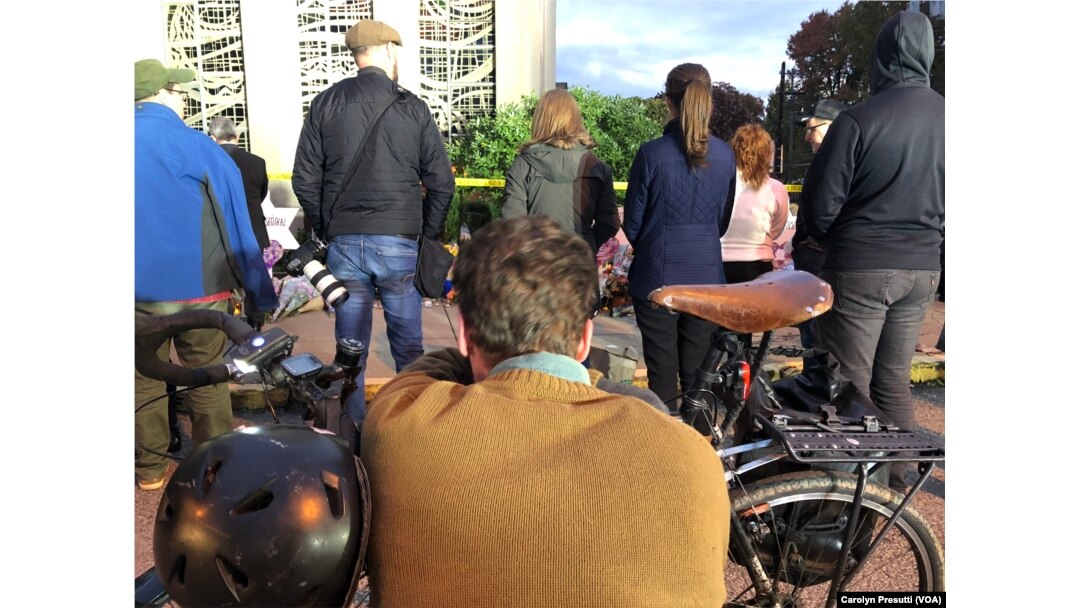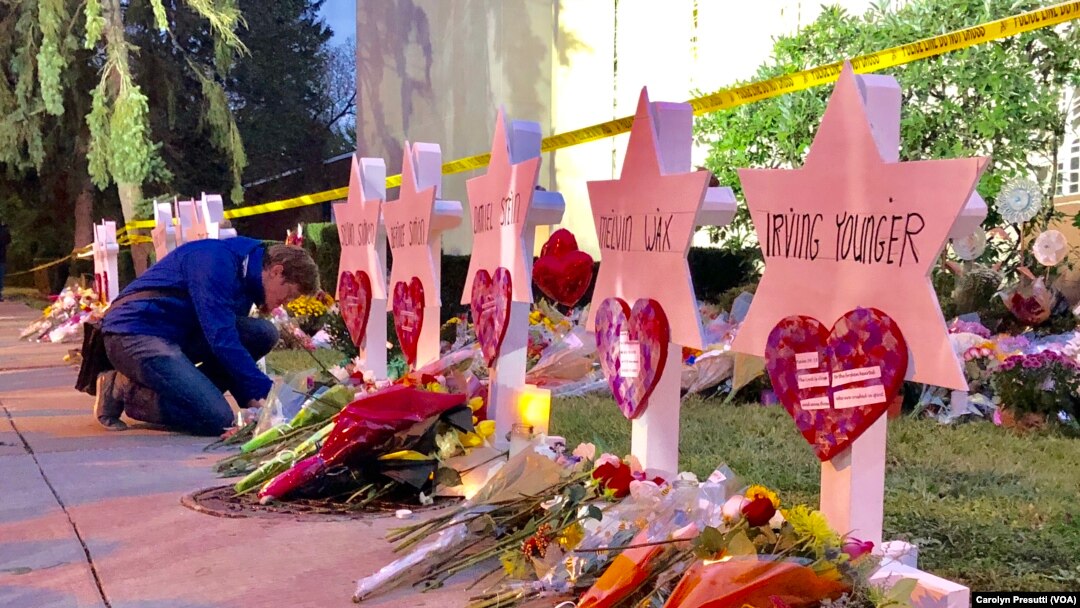A tap on the shoulder was the sign. Just hours after the massacre inside The Tree of Life Synagogue, an impromptu Victim’s Assistance Center was set up at the Jewish Community Center of Greater Pittsburgh.
Family of synagogue members who hadn’t been located entered the center and waited for news of their loved ones. “They knew what was inevitable, we knew what was inevitable,” remembers Rabbi Ron Symons. But it took time for the FBI to complete its work. And so they waited.
WATCH: Religious leaders gather after Synagogue attack
Your browser doesn’t support HTML5
Pittsburgh Religious Leaders Join to Denounce Hate
Rabbi Symons, who runs the Center for Loving Kindness at the JCC, says it was “horrific,” watching congregants sit, awaiting a tap on the shoulder to come and talk with him and other grief counselors.
Eleven died on Saturday as a gunman entered the synagogue and screamed “All Jews must die.” Forty-six-year-old Robert Bowers had his first day in court Monday and was held without bond. His next hearing is Thursday, when prosecutors will present the evidence against him. Twenty-two of the 29 federal charges could carry the death penalty.
They involve murder and hate crimes.

Mourners pass by the makeshift memorial at the Tree of Life Synagogue in Pittsburgh, Pennsylvania on Oct. 29, 2018.
Difficult task, but cherished
But there was only love in a Jewish tradition for the victims that began behind closed doors at the Allegheny County Medical Examiner’s Office.
“It isn’t fun. It’s difficult and an inconvenience. But it’s cherished,” explained Rabbi Daniel Wasserman. Rabbi Wasserman organized and scheduled the rotation of Chevra Kadisha -- a “holy group” of men and women who stayed with the bodies until they were released to the families Monday morning.
The Rabbi says “there was only a slight gap overnight” until the FBI and other officials gave permission to allow his members in a nearby room, and then eventually next to the bodies. The volunteers recited the Book of Psalms, typically in order, as the next volunteer rotated in, an hour later.
Jewish belief is that the soul is still connected to the body and is aware of a presence in the room. Rabbi Symons says “It’s a reminder that we are not alone and always in community with each other.”
Two young girls light candles at a memorial on Oct. 29, 2018, in front of the Jewish Community Center of Greater Pittsburgh, one of the sites chosen for the first day of funerals.
More than 20 volunteers came forward and Rabbi Wasserman was overwhelmed with the response. On Monday morning, he contacted the 40 more who had signed up, informing them that all the bodies had been taken to the funeral home. The families will decide if the tradition will continue.
Chevra Kadisha also involves Tahara, a ritual cleansing of the body before burial. After purifying the body, it is wrapped in a white shroud and placed in a casket. The entire process is part of a group of rituals known as a true kindness, since the dead can offer no appreciation for the deed.
WATCH: Chevra Kadisha explainer
Your browser doesn’t support HTML5
Synagogue Shooting Jewish Rituals
On Tuesday, the first funerals will take place as three men are buried. Two brothers – David, 54, and Cecil Rosenthal, 59, were intellectually challenged and described as “beloved and inseparable.” The funeral for family doctor Jerry Rabinowitz, 66, will take place at the Jewish Community Center -- the same place where his family members got a tap on the shoulder just three days ago.
Then memorials for brothers Cecil and David Rosenthal stand next to each other outside the Tree of Life synagogue on Oct. 29, 2018.


